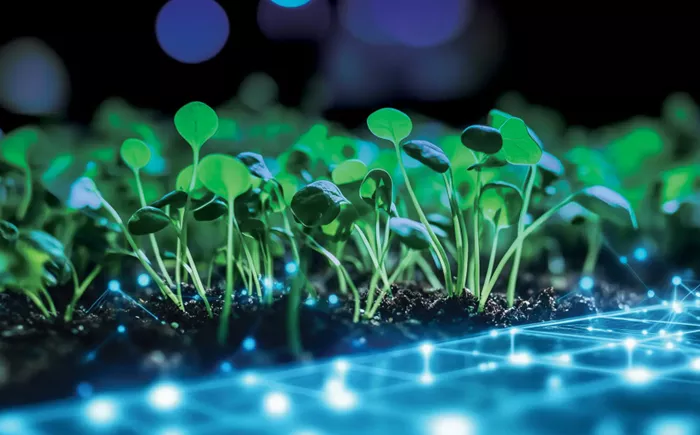A team of researchers led by Prof. Bert De Rybel from VIB-UGent has uncovered a vital mechanism in plant root development that could improve crop resilience, particularly in the face of climate change. The study, published in Science, offers new insights into a crucial “puberty” phase in roots, which may hold the key to developing drought-resistant plants.
Plants, like all living organisms, go through distinct developmental stages—from seeds to shoots to mature plants. A critical phase in this process, known as “root puberty,” sees young roots change their growth patterns to adapt to environmental conditions. During this phase, the orientation of cell divisions alters, allowing roots to grow in specific directions—either deeper or wider—depending on the plant’s needs.
The Role of SPL13 in Root Development
Between the first and third weeks of development, roots undergo significant changes. Prof. De Rybel’s team, in collaboration with the VIB Screening Core and the University of Ghent’s Department of Chemistry, has identified the key molecular processes driving this transformation. Their research highlights the role of SQUAMOSA PROMOTER BINDING PROTEIN-LIKE 13 (SPL13), a protein that regulates the orientation of cell divisions in roots, influencing their growth and shape.
“Understanding how SPL13 affects root growth at a molecular level has provided valuable insights into the age-dependent changes that occur during this crucial phase,” said Prof. De Rybel. “This protein is key to the transition, regulating how cells divide and determine root growth direction.”
Implications for Agriculture
The changes in root structure driven by SPL13 are essential for overall plant development. The study also revealed that altering the expression of SPL13 could accelerate or slow down the aging of roots, potentially offering a way to manipulate growth patterns for optimal crop yields.
Dr. Dominique Audenaert, head of the VIB Screening Core, explained that the team’s advanced microscopy-based screening technology helped identify molecules that influence the orientation of cell division. “By manipulating SPL13 expression, we were able to make root systems grow steeper and deeper, which has important implications for improving plant resilience.”
This discovery could lead to new agricultural strategies, where modifying root growth patterns enhances plant tolerance to environmental stressors like drought. In the face of a growing global population, optimizing plant growth to ensure food security is becoming increasingly critical. The potential to alter root growth to adapt to changing climates is one of the study’s most promising outcomes.
Rethinking Root Growth Research
The study also challenges traditional approaches to root research. Most plant studies focus on roots that are around one week old, but Prof. De Rybel’s team has shown that significant developmental changes occur between the first and third weeks. This new understanding could prompt researchers to reconsider how they study root growth in laboratory settings.
“Our findings provide a deeper understanding of root development and open up new possibilities for improving crop resilience and yield,” concluded Prof. De Rybel. “This research not only sheds light on a fundamental aspect of plant biology but also paves the way for innovations in agriculture that can help address the challenges posed by a changing climate.”
By unraveling the complexities of root development, this research could play a critical role in developing crops that are better equipped to withstand the stresses of the future, ensuring more sustainable agricultural practices.
Related topics:
- Plant Favorites Shine Through at Louisiana State Trials Despite Challenging Conditions
- ReLeaf Cedar Rapids Plants 3,000 Trees This Fall, Bringing This Year’s Total to 11,000
- Don’t Let This Invasive Plant Sneak Into Your Holiday Wreaths


